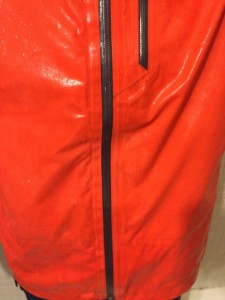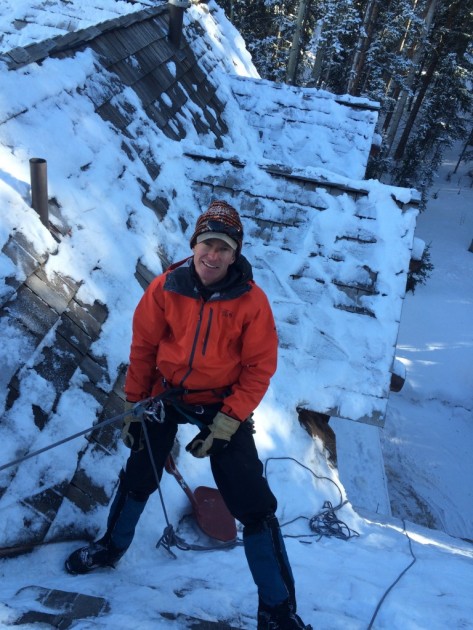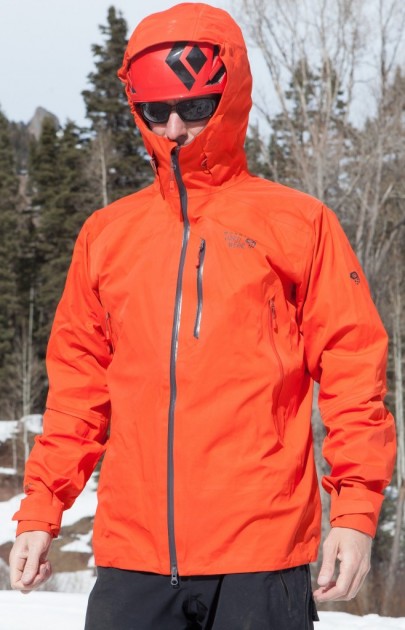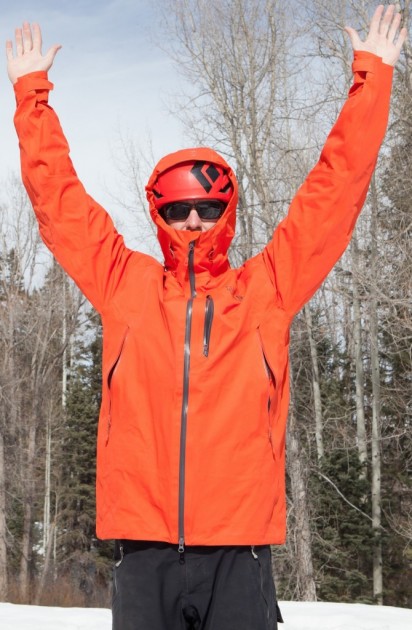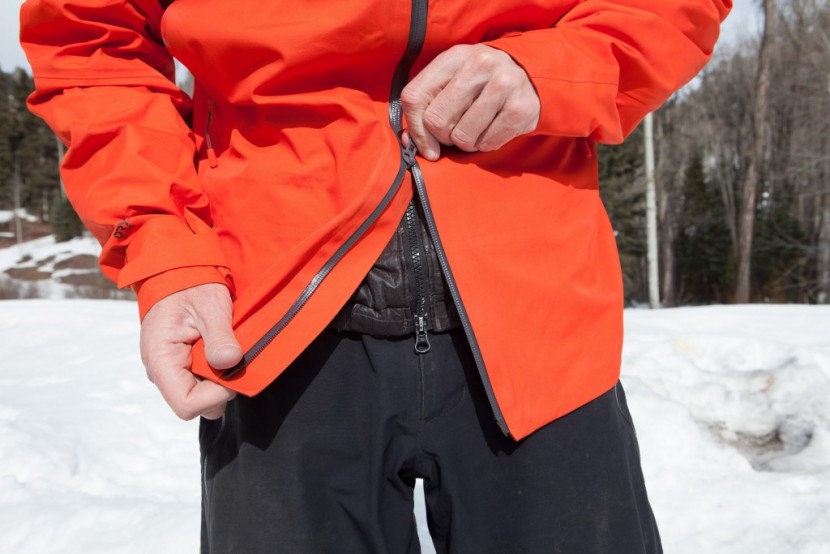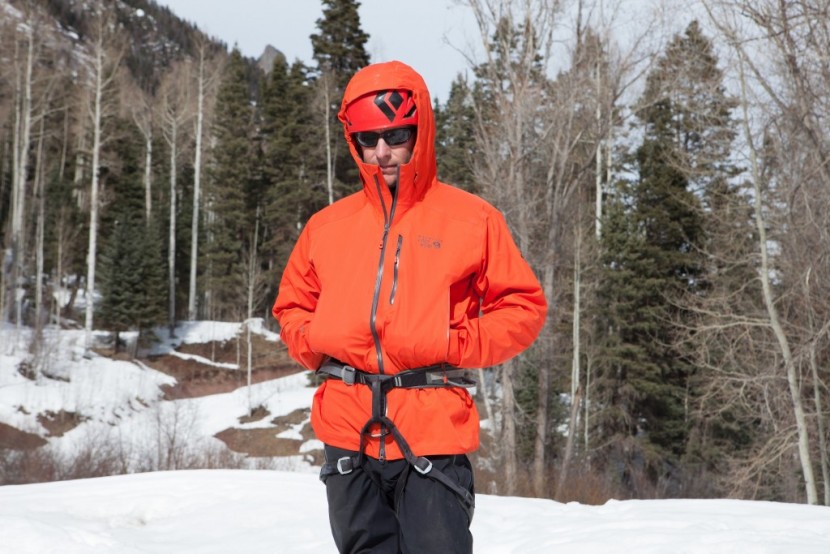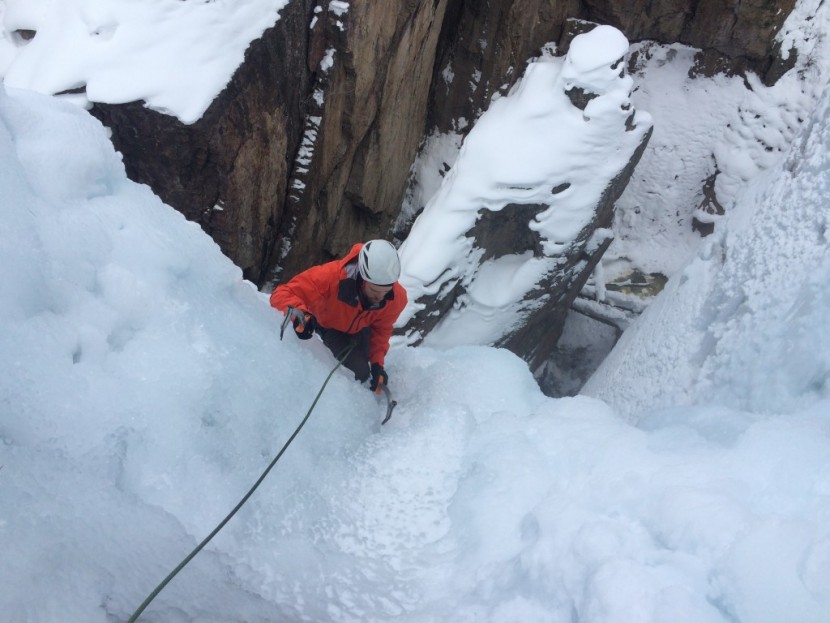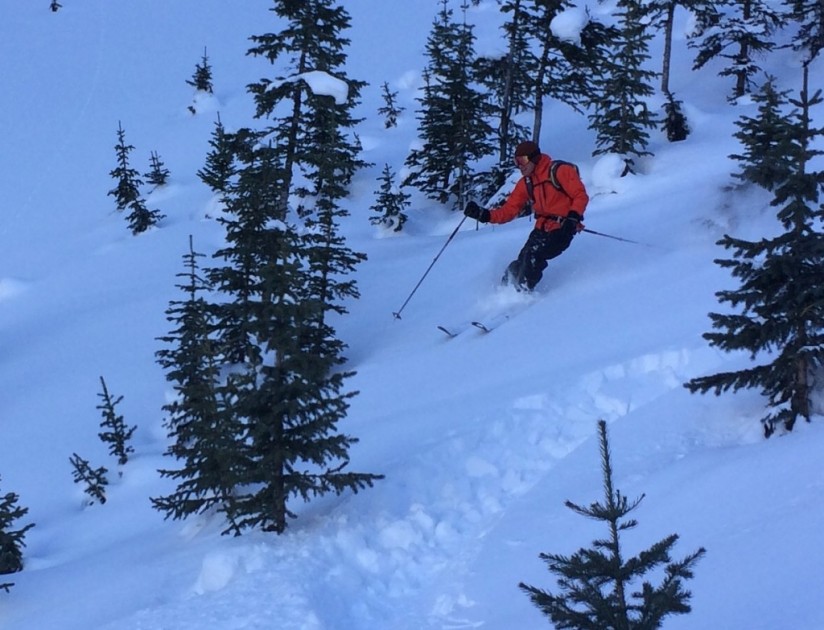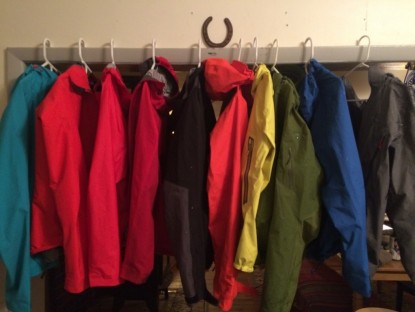Mountain Hardwear Torsun Review
Our Verdict
Our Analysis and Test Results
An all-around performer that Mountain Hardwear says is best for alpine climbing, the Torsun is most similar to the Patagonia Refugitive and the Outdoor Research Axiom. Compared to these two jackets, however, there is no doubt that the Torsun feels heavier and bulkier — the fabric on the entire coat just feels thicker. It is made of 40 denier face fabric like the Arc'teryx Alpha FL, but the Torsun is far heavier than that jacket. Overall, we couldn't really fault this shell's performance, and indeed think it is a jacket worth recommending, especially for its price. At the end of the day, though, we found ourselves preferring lighter and more supple alternatives for the same purpose.
Weather Protection
Weight
Our men's size large weighed 19.1 ounces, making it the heaviest jacket in our review. While we have to admit that this still isn't very heavy, we also have to give lip service to the fact that the Torsun feels heavy. Additionally, its thick fabric doesn't pack down nearly as well as the other heavy jackets we tested, like the Arc'teryx Theta AR or Arc'teryx Beta AR.
Mobility & Fit
The hem on the Torsun is a good long length that gives good coverage down low, and the sleeves are plenty long enough for ice and alpine climbing with the arms overhead. The fit is trim and despite feeling heavy, the material used is mobile. Our biggest complaint when it came to mobility and fit was the hood. It was slightly too tight with a helmet on, and caused some constriction and uncomfortable rubbing on our face around the collar when zipped all the way up. Additionally, side-to-side and up and down head movement was restricted by the tightness of the hood. It could have been worse, no doubt, but we found it to be less than ideal.
Breathability
Mountain Hardwear claims that their Dry.Q Elite membrane does not need relative humidity inside the jacket to reach very high levels to start breathing (like GORE-TEX Pro). Instead, the membrane is designed to breathe as soon as you put it on. Like pretty much all of the claims made by the marketing professionals representing the various brands that we tested here, there was no way for us to substantiate this claim or disprove it. We can say that initially while running in the Torsun in our treadmill test, we felt quite hot, but then after a few minutes we began to feel noticeably cooler. This would seem to indicate that the jacket was indeed breathing. Despite being covered in sweat after the time was up, there was no indication of moisture or water at any point inside the Torsun, ranking it right up there with the best jackets in this test. It is worth noting that Mountain Hardwear really seems to stand behind the breathability of this jacket - it's designers didn't even feel that it was necessary to include pit zips for added ventilation. In fact, among the five heaviest jackets we tested, it's the only one that did not include pit zips.
Features
We loved the feature set of the Torsun and think it is very comparable to our other favorites - the Arc'teryx Theta AR and the Patagonia Refugitive - in terms of quantity and functionality of features. Highlights for us were the liberal fleece lining around the neck and collar for added comfort. We also loved the draw cord buckles that function similar to those on the Refugitive (however, these buckles are not as visible, and therefore took us a while to figure them out). The hood tightening pull cords can be accessed from either inside the jacket or outside, a feature that also made good sense to us. The jacket has very large mesh handwarmer pockets, as well as an exterior chest pocket and an interior chest pocket, ensuring there was no shortage of places to stash things. It was also one of only two jackets that features a two-way front zipper, which we love for accessing our under-layers.
Best Applications
Mountain Hardwear claims that the Torsun is designed for alpine climbing, and we agree that this is a great use for this jacket. Due to its heaviness and bulkiness, we didn't enjoy it as much for backcountry skiing, although it did perform quite well. Regardless, this jacket is meant for tough winter conditions, and is not something you would want to use in the summer or in warmer climates.
Value
The Torsun will set you back $350.00, making it one of the most affordable jackets in the review. At this price, we think it provides excellent value. Only two jackets that we tested were cheaper — the Marmot Nano AS and the REI Shuksan II — and the Torsun is way ahead in terms of performance compared to those two.
Conclusion
The Mountain Hardwear Torsun is an excellent all-around jacket that we would recommend for winter alpine or ice climbing or resort skiing. Although it is the heaviest and bulkiest jacket in this review, its fit is still supple and mobile, it has a great set of features, and it's plenty waterproof and breathable. It presents a great value at only $350.00.
Other Versions & Accessories
Mountain Hardwear Torsun - Women's - $350.00
- women's specific version of the same jacket




